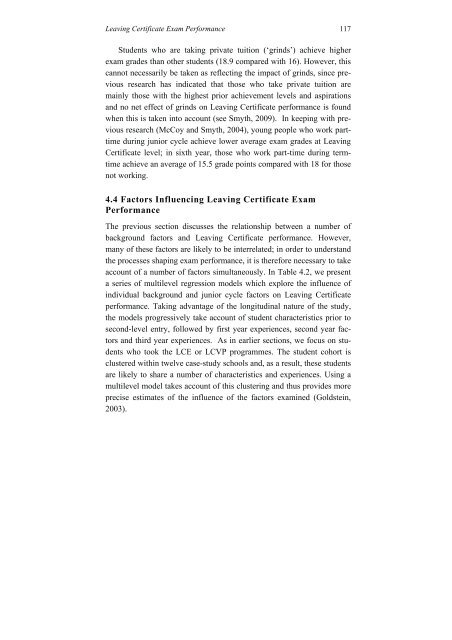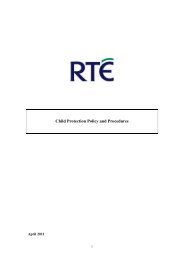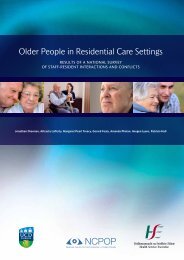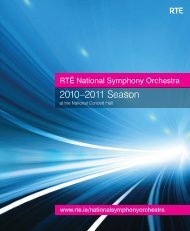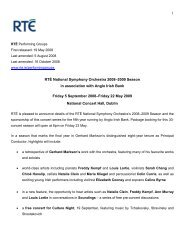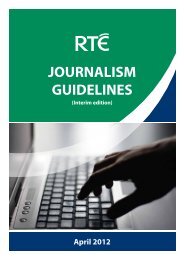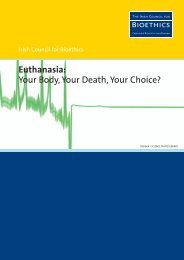From Leaving CertiFiCate to Leaving SChooL a Longitudinal Study ...
From Leaving CertiFiCate to Leaving SChooL a Longitudinal Study ...
From Leaving CertiFiCate to Leaving SChooL a Longitudinal Study ...
Create successful ePaper yourself
Turn your PDF publications into a flip-book with our unique Google optimized e-Paper software.
<strong>Leaving</strong> Certificate Exam Performance 117<br />
Students who are taking private tuition (‘grinds’) achieve higher<br />
exam grades than other students (18.9 compared with 16). However, this<br />
cannot necessarily be taken as reflecting the impact of grinds, since previous<br />
research has indicated that those who take private tuition are<br />
mainly those with the highest prior achievement levels and aspirations<br />
and no net effect of grinds on <strong>Leaving</strong> Certificate performance is found<br />
when this is taken in<strong>to</strong> account (see Smyth, 2009). In keeping with previous<br />
research (McCoy and Smyth, 2004), young people who work parttime<br />
during junior cycle achieve lower average exam grades at <strong>Leaving</strong><br />
Certificate level; in sixth year, those who work part-time during termtime<br />
achieve an average of 15.5 grade points compared with 18 for those<br />
not working.<br />
4.4 Fac<strong>to</strong>rs Influencing <strong>Leaving</strong> Certificate Exam<br />
Performance<br />
The previous section discusses the relationship between a number of<br />
background fac<strong>to</strong>rs and <strong>Leaving</strong> Certificate performance. However,<br />
many of these fac<strong>to</strong>rs are likely <strong>to</strong> be interrelated; in order <strong>to</strong> understand<br />
the processes shaping exam performance, it is therefore necessary <strong>to</strong> take<br />
account of a number of fac<strong>to</strong>rs simultaneously. In Table 4.2, we present<br />
a series of multilevel regression models which explore the influence of<br />
individual background and junior cycle fac<strong>to</strong>rs on <strong>Leaving</strong> Certificate<br />
performance. Taking advantage of the longitudinal nature of the study,<br />
the models progressively take account of student characteristics prior <strong>to</strong><br />
second-level entry, followed by first year experiences, second year fac<strong>to</strong>rs<br />
and third year experiences. As in earlier sections, we focus on students<br />
who <strong>to</strong>ok the LCE or LCVP programmes. The student cohort is<br />
clustered within twelve case-study schools and, as a result, these students<br />
are likely <strong>to</strong> share a number of characteristics and experiences. Using a<br />
multilevel model takes account of this clustering and thus provides more<br />
precise estimates of the influence of the fac<strong>to</strong>rs examined (Goldstein,<br />
2003).


